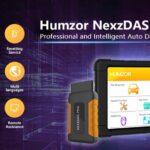Billing and coding can often feel like a significant hurdle for new nurse practitioners (NPs) entering primary care. The complexities of evaluation and management (E&M) codes, coupled with the pressure to ensure accuracy, can be overwhelming. However, mastering these coding practices is crucial for compliant and efficient practice management. Fortunately, with the right guidance and resources, nurse practitioner coding practices in primary care can become straightforward and manageable.
Understanding the nuances of E&M coding is fundamental for NPs in primary care. The coding system, while detailed, is designed to reflect the complexity of patient encounters. A common area of confusion lies in differentiating between coding levels, particularly levels 3 and 4 for office visits. Level 3 typically applies to straightforward or low complexity visits, while Level 4 is designated for moderate complexity. The key differentiator involves the level of medical decision-making, the amount of data reviewed and analyzed, and the complexity of patient problems addressed during the visit. A frequent pitfall for new NPs is under-coding or over-coding, often stemming from uncertainty in assessing these complexity factors. Accurate coding requires a clear understanding of the Centers for Medicare & Medicaid Services (CMS) guidelines and how they apply to the primary care setting.
To simplify and enhance the accuracy of nurse practitioner coding practices, utilizing practical tools is highly recommended. A cheat sheet, specifically designed for primary care E&M coding, can be an invaluable asset. These resources often break down the coding levels based on key criteria, such as history, examination, and medical decision-making, providing a plug-and-go approach to code selection. By inputting patient visit data into such a tool, NPs can quickly determine the appropriate E&M code, minimizing errors and maximizing appropriate reimbursement. These cheat sheets are regularly updated to reflect the most current CMS guidelines, ensuring ongoing compliance.
In conclusion, while nurse practitioner coding practices in primary care may initially seem daunting, they are an essential skill to develop. By focusing on understanding E&M coding levels and utilizing practical resources like coding cheat sheets, NPs can confidently navigate billing and coding requirements. Embracing these tools not only reduces the risk of errors and potential compliance issues but also streamlines practice workflows, allowing nurse practitioners to focus more on patient care.
References:

